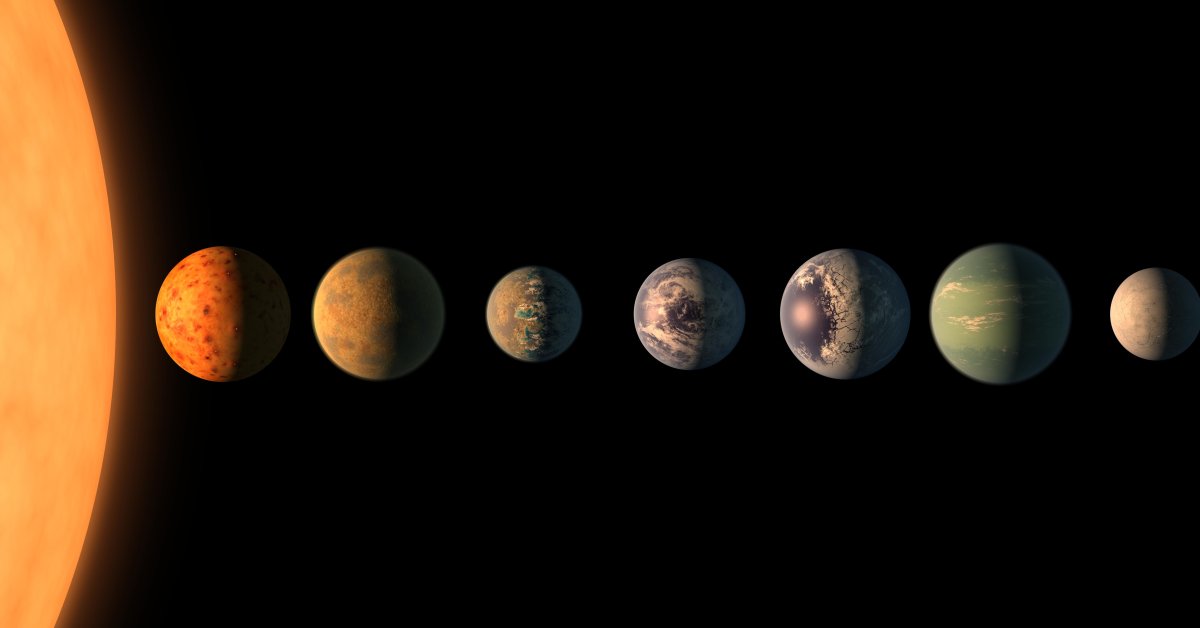
Time was, there were only nine known planets in the entire universe—the gaggle of worlds that orbit our sun. That local number was reduced to eight in 2006, when the International Astronomical Union busted Pluto down to a dwarf planet. But even before Pluto was pink-slipped, the planetary census far deeper in space began to grow, with the discovery, in 1992, of a planet orbiting a rapidly spinning pulsar; and later, in 1995, of a Jupiter-like planet orbiting a sun-like star. Since then the planetary population has exploded, and, as NASA’s Jet Propulsion Laboratory reported this week, the official total of known worlds beyond our own has now topped 5,000.
The majority of the discoveries were made by the Kepler Space Telescope. Launched in 2009, it hunts for planets using the so-called transit method—looking for the slight dimming in light that occurs when an orbiting planet briefly blocks the light from the star. The dimming is fantastically subtle—the equivalent of removing a single light bulb from a board of 10,000 of them, is how Natalie Batalha, former Kepler mission director, described it to TIME. And Kepler studied only a tiny portion of the sky, encompassing just 150,000 stars. Still, in the 11 years it operated, it confirmed the existence of 2,709 exoplanets and has returned data still being studied about a possible 2,057 more.
The newer Transiting Exoplanet Survey Satellite (TESS), launched in 2018, also uses the transit method, but is equipped with multiple telescopic eyes, allowing it to scan the entire bowl of the sky. In just the short time it’s been operating, it has confirmed the existence of 203 more exoplanets and has spotted another possible 5,459 that astronomers are now investigating.
The transit method is not the only way to go looking for exoplanets. Other telescopes—both space-based and Earth-based—use what’s known as the radial-velocity method. In this case, they study a star, looking for the slight wobble caused by the gravity of a planet—or multiple planets—tugging on it as they orbit. The most celebrated multi-planet system to date is located just 39 light years from Earth, where seven planets orbit the red dwarf known as Trappist-1.
The planets that have been discovered so far range in size and composition. There are so-called hot Jupiters—which, as their name suggests, are gaseous worlds that orbit close to the fires of their parent planet. Others are smaller gas worlds, similar in size to Neptune. Still others—the most promising ones—are compact, rocky planets like Earth, some orbiting in the habitable zone of their star, a place where temperatures are not too hot and not too cold for water, the sine qua non of life as we know it, to exist in a liquid state.
The mere fact that astronomers find planets pretty much everywhere they look has led them to conclude that virtually every star in the universe is orbited by at least one planet—making for trillions upon trillions of potential worlds. “Each one of them is a brand-new planet,” said NASA astronomer Jessie Christiansen in a statement. “I get excited about every one because we don’t know anything about them.”
This story originally appeared in TIME Space, our weekly newsletter covering all things space. You can sign up here.
- The Man Behind Ethereum Is Worried About Crypto's Future
- What We Learned During Ketanji Brown Jackson’s Supreme Court Confirmation Hearings
- How Telegram Became the Digital Battlefield in the Russia-Ukraine War
- Why You Still Can’t Just Walk Into a Pharmacy and Get a Prescription for a COVID-19 Pill
- Column: 5 Ways to Avert the Global Food Security Crisis
- The Persistence of Atlanta, TV’s Greatest Surrealist Comedy
- Exclusive: Romania's Prime Minister on How NATO Can Navigate This 'Stark New Reality'
- States Could Let Parents Sue Big Tech for Addicting Kids. Here’s What That Really Means.
https://time.com/6160402/5000-planets-nasa/
2022-03-25 12:51:00Z
1350104149
Bagikan Berita Ini















0 Response to "NASA Announces 5,000 Exoplanets Discovered - TIME"
Post a Comment